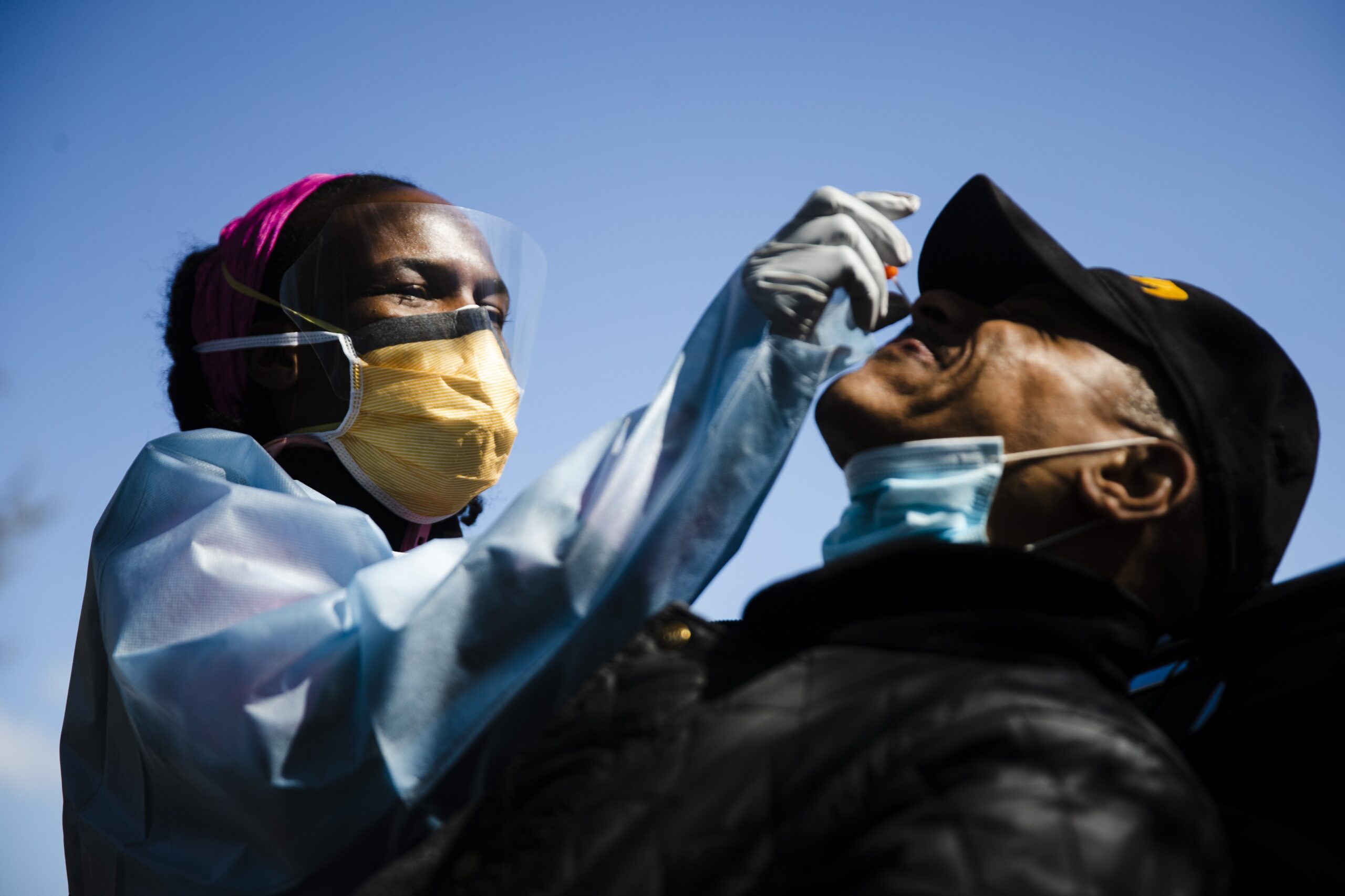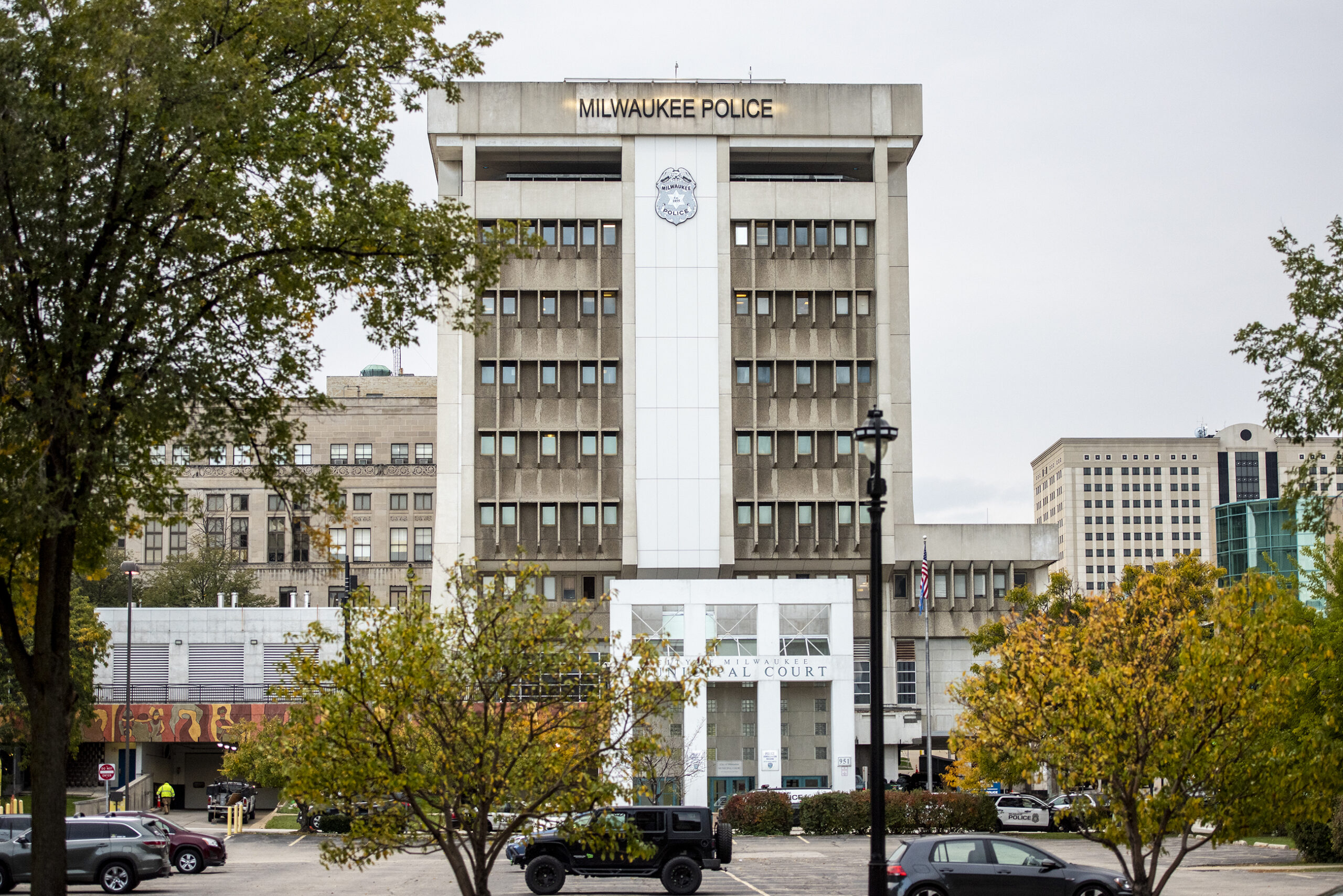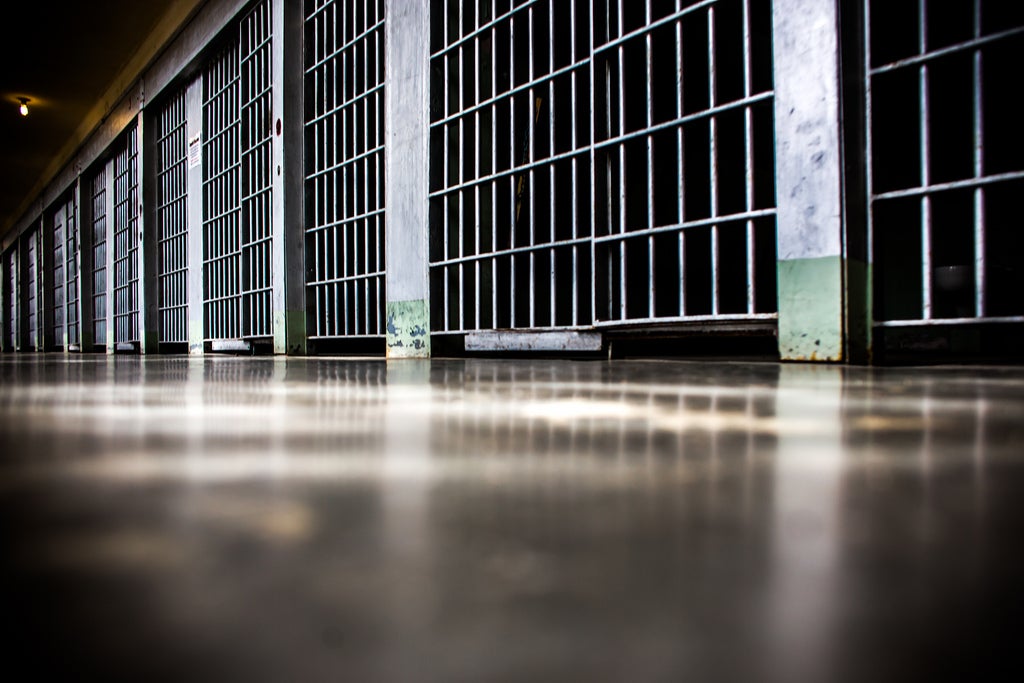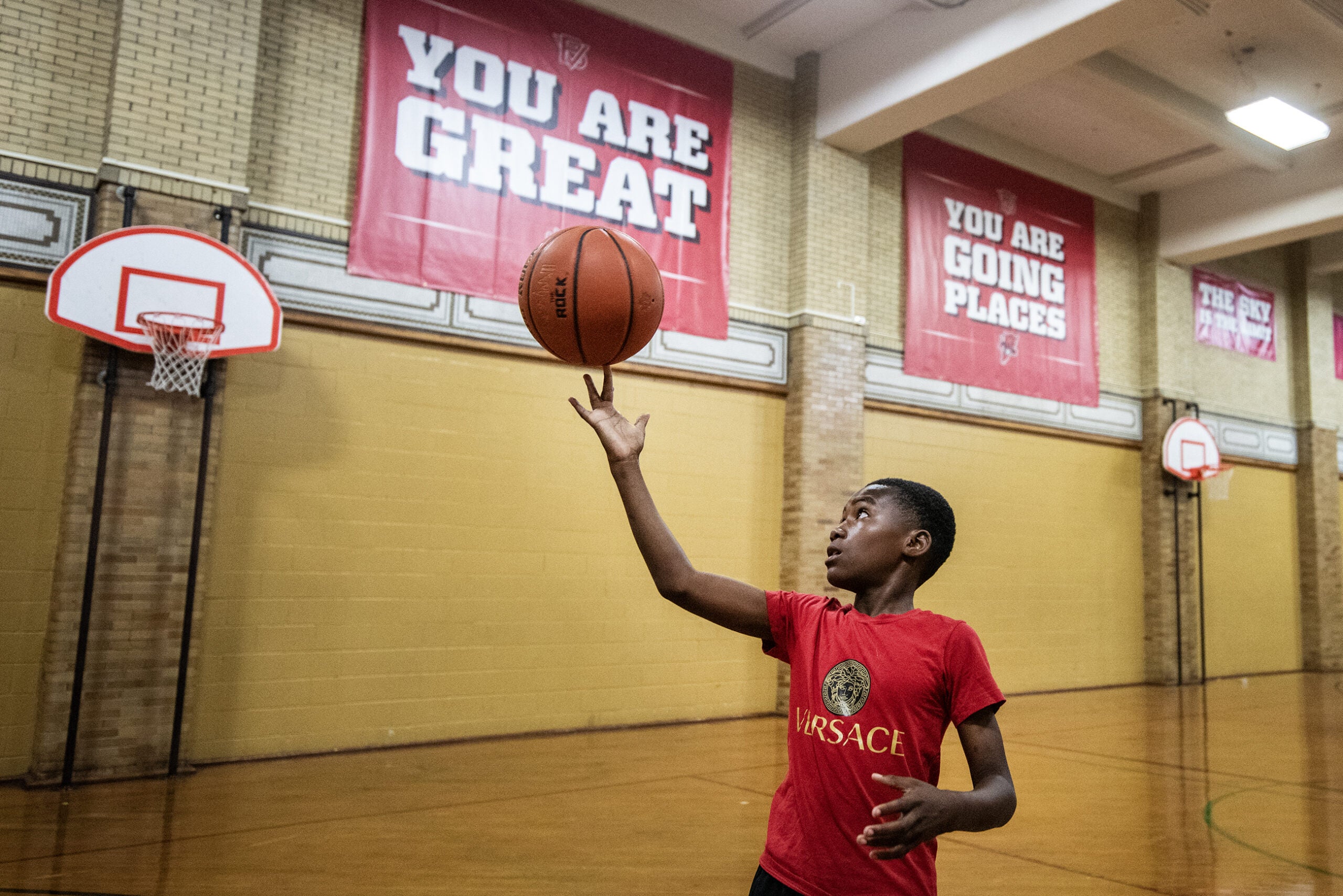It started as a fever in mid-March. Then Lawrence Riley had trouble catching his breath.
His daughter, Whitley Riley, 20, said Lawrence’s fever broke. But then, he got worse.
“My mamma had to get him dressed,” Whitley said. “He just wasn’t his normal self.”
Stay informed on the latest news
Sign up for WPR’s email newsletter.
[[{“fid”:”1246736″,”view_mode”:”embed_portrait”,”fields”:{“format”:”embed_portrait”,”alignment”:”right”,”field_image_caption[und][0][value]”:”%3Cp%3EWhitley%20Riley%20and%20her%20father%26nbsp%3BLawrence%2C%20at%20her%20High%20School%20graduation%20on%20May%2018%2C%202019.%20Lawrence%20was%20the%20first%20person%20to%20die%20from%20complications%20of%20COVID-19%20in%20Milwaukee%20County%20on%20March%2019%2C%202020.%20%3Cem%3EPhoto%20courtesy%20of%20the%20Riley%20family%3C%2Fem%3E%3C%2Fp%3E%0A”,”field_image_caption[und][0][format]”:”full_html”,”field_file_image_alt_text[und][0][value]”:”Whitley Riley and her father Lawrence”,”field_file_image_title_text[und][0][value]”:”Whitley Riley and her father Lawrence”},”type”:”media”,”field_deltas”:{“1”:{“format”:”embed_portrait”,”alignment”:”right”,”field_image_caption[und][0][value]”:”%3Cp%3EWhitley%20Riley%20and%20her%20father%26nbsp%3BLawrence%2C%20at%20her%20High%20School%20graduation%20on%20May%2018%2C%202019.%20Lawrence%20was%20the%20first%20person%20to%20die%20from%20complications%20of%20COVID-19%20in%20Milwaukee%20County%20on%20March%2019%2C%202020.%20%3Cem%3EPhoto%20courtesy%20of%20the%20Riley%20family%3C%2Fem%3E%3C%2Fp%3E%0A”,”field_image_caption[und][0][format]”:”full_html”,”field_file_image_alt_text[und][0][value]”:”Whitley Riley and her father Lawrence”,”field_file_image_title_text[und][0][value]”:”Whitley Riley and her father Lawrence”}},”link_text”:false,”attributes”:{“alt”:”Whitley Riley and her father Lawrence”,”title”:”Whitley Riley and her father Lawrence”,”class”:”media-element file-embed-portrait media-wysiwyg-align-right”,”data-delta”:”1″}}]]On March 16, the 66-year-old Navy veteran and former Milwaukee firefighter was taken to the hospital.
Three days later, Lawrence was the first person in Milwaukee County to die from complications of the novel coronavirus.
Whitley said her dad had a chronic inflammatory lung disease, known as COPD, but before he tested positive for the virus, her family didn’t realize COVID-19 had reached Milwaukee.
“We knew that the virus had hit America, but we didn’t think that it had hit Wisconsin or Milwaukee,” she said. “When they took him in and tested him right away, that was just a shock because we didn’t think the virus had hit us.”
As of Monday, there have been 4,051 cases of COVID-19 in Milwaukee County and 221 deaths. African Americans represent about a quarter of the county’s population but account for almost half of the deaths.
As the state continues to see the number of COVID-19 cases grow, Milwaukee’s communities of color have been hit particularly hard. In March, Gov. Tony Evers called African American deaths in the city related to the coronavirus a “crisis within a crisis.” Since then, the problem has escalated.
Of the 221 coronavirus-related deaths reported in Milwaukee County on Monday, 108 of the victims were black, including Lawrence Riley.
Racial disparities including childhood lead poising, infant mortality and obesity have plagued Milwaukee for years. So much so that in 2019, Milwaukee County declared racism a public health crisis.
Dr. Ben Weston, of the Medical College of Wisconsin, said rather than the prolonged mortality that accompanies chronic disease, the unequal distribution of COVID-19 can be seen in real time.
“We can see that an African American person is nearly three times more likely to die of COVID19 in Milwaukee County than a white person,” Weston, who also serves as the director of medical services for the Milwaukee County Office of Emergency Management, said. “And we can see that they are a staggering seven times more likely to die than a white person in the state of Wisconsin.”
Weston said the reason for this is not due to individual choices. Rather, the historical, institutional and ongoing effects of racism.
“Of marginalization, and of racism in these communities,” Weston said. “Our county is not alone in these disparities.”
Milwaukee was one of the first cities in the country to break down novel coronavirus data by race.
As more cities have done so, national data shows counties with a disproportionate number of African American residents testing positive for COVID-19.
Melody McCurtis is a community organizer in Milwaukee’s Metcalfe Park Neighborhood. The neighborhood is 98 percent African American and 76 percent of the residents there rent their homes.
The neighborhood is also one of the city’s coronavirus hot spots.
Despite the risk, McCurits said when you’re poor, COVID-19 isn’t a priority.[[{“fid”:”1249821″,”view_mode”:”embed_portrait”,”fields”:{“format”:”embed_portrait”,”alignment”:”right”,”field_image_caption[und][0][value]”:”%3Cp%3EMelody%20McCurtis%20and%20Metcalfe%20Park%20Community%20Bridges%20donates%20COVID-19%20care%20packages%20every%20other%20week%20to%20Metcalfe%20Park%20residents.%20Packages%20include%20fresh%20food%20and%20paper%20goods.%20%3Cem%3EPhoto%20courtesy%20of%20Melody%20McCurtis%3C%2Fem%3E%3C%2Fp%3E%0A”,”field_image_caption[und][0][format]”:”full_html”,”field_file_image_alt_text[und][0][value]”:”Melody McCurtis and Metcalfe Park Community Bridges donates COVID-19 care packages”,”field_file_image_title_text[und][0][value]”:”Melody McCurtis and Metcalfe Park Community Bridges donates COVID-19 care packages”},”type”:”media”,”field_deltas”:{“2”:{“format”:”embed_portrait”,”alignment”:”right”,”field_image_caption[und][0][value]”:”%3Cp%3EMelody%20McCurtis%20and%20Metcalfe%20Park%20Community%20Bridges%20donates%20COVID-19%20care%20packages%20every%20other%20week%20to%20Metcalfe%20Park%20residents.%20Packages%20include%20fresh%20food%20and%20paper%20goods.%20%3Cem%3EPhoto%20courtesy%20of%20Melody%20McCurtis%3C%2Fem%3E%3C%2Fp%3E%0A”,”field_image_caption[und][0][format]”:”full_html”,”field_file_image_alt_text[und][0][value]”:”Melody McCurtis and Metcalfe Park Community Bridges donates COVID-19 care packages”,”field_file_image_title_text[und][0][value]”:”Melody McCurtis and Metcalfe Park Community Bridges donates COVID-19 care packages”}},”link_text”:false,”attributes”:{“alt”:”Melody McCurtis and Metcalfe Park Community Bridges donates COVID-19 care packages”,”title”:”Melody McCurtis and Metcalfe Park Community Bridges donates COVID-19 care packages”,”class”:”media-element file-embed-portrait media-wysiwyg-align-right”,”data-delta”:”2″}}]]
“Our top worry is food, and then COVID-19 and rent,” McCurtis said. “It’s a medley of things. I mean our families are concerned about all these things at one time.”
The food pantry in Metcalf Park is only open three hours a week, so food is scarce and social distancing is impossible.
McCurtis has been delivering care packages every other week. She said people are staying inside of their homes, but the community is still at risk.
“I’m at risk for COVID-19 because I’m poor,” McCurtis said. “I’m at risk for getting this virus because I still have to go and work this job. Or I still have to go and get food. Or I still might have to travel on the bus.”
Recently, Milwaukee’s Hispanic community has seen a greater increase in COVID-19 cases.
Weston said like the African American community, those in the Hispanic community are less likely to have the options of telecommuting and are more likely to share housing or live in situations that make social distancing more difficult.
Those barriers are compounded by “the added challenges of fear of deportation and lack of any added unemployment safety net,” Weston said.
Weston said COVID-19 is spreading quickly in communities of color because of decades-long disparities and access to regular health care, fresh food and safe housing.
But meaningful change as a result of the pandemic — by way of safer homes, fresher food and easier access to health care — remains to be seen.
Wisconsin Public Radio, © Copyright 2025, Board of Regents of the University of Wisconsin System and Wisconsin Educational Communications Board.






